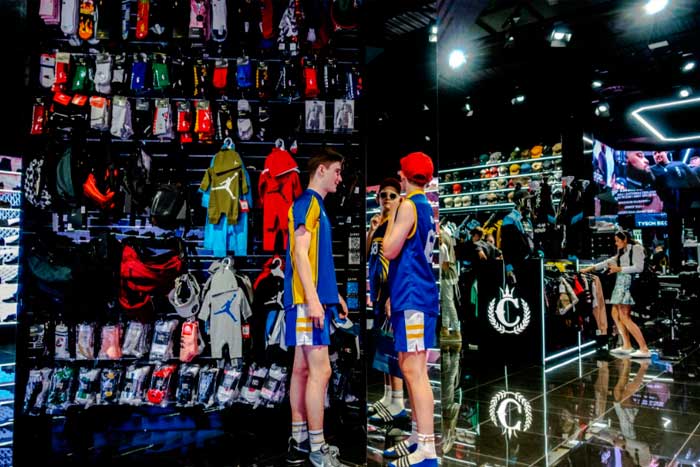Outdoor recreation is undergoing a transformation as more brands, athletes, and communities advocate for greater inclusivity in nature. And as Rick Torrey knows, adaptive sports—activities modified to accommodate individuals with disabilities—are helping redefine what it means to participate in outdoor adventures.

This shift isn’t just about equipment or access; it’s about changing the narrative around who belongs in outdoor spaces.
And as awareness grows, so too does the infrastructure and support needed to make the outdoors truly accessible for all. The path forward is one of collaboration, visibility, and continuous learning—an effort that benefits not only adaptive communities but the broader outdoor culture as a whole.
Understanding Adaptive Sports and Their Role in Outdoor Recreation
Adaptive sports are modified physical activities that make participation possible for individuals with physical, cognitive, or sensory disabilities. These sports use specialized equipment or rule changes to ensure athletes can compete or enjoy recreational experiences on their own terms.
Participation in adaptive recreation continues to grow as more communities recognize the importance of inclusion in outdoor spaces. Events like adaptive skiing clinics or mountain biking programs are helping to reshape what outdoor access looks like for people of all abilities.
Programs led by local nonprofits often serve as the bridge connecting individuals to these opportunities.
Why Outdoor Businesses Are Embracing Adaptive Sports
Outdoor brands are increasingly integrating adaptive sports into their missions as a way to reflect values like inclusivity, equity, and community empowerment. These aren’t just abstract ideals—they’re principles that shape how companies design products, engage with customers, and define success in the outdoor space.
Consumers are also influencing this shift. Today’s outdoor enthusiasts expect more from the brands they support, prioritizing companies that demonstrate real-world commitment to social impact. This demand is driving innovation and pushing businesses to think beyond traditional markets. Patagonia’s Worn Wear and REI’s Co-op initiatives show how sustainability and accessibility can intersect meaningfully.
Supporting adaptive sports also opens up new avenues for growth. Whether through specialized gear or community partnerships, brands are discovering that accessibility can lead to deeper customer loyalty and stronger brand identity. These efforts often spark innovation that benefits a wider range of consumers, including aging athletes or those recovering from injuries.
How Brands Are Supporting Adaptive Athletes and Programs
Outdoor companies are taking tangible steps to support adaptive sports communities. Some work directly with athletes during the product development process, gathering insights that lead to more functional and inclusive gear. These collaborations often result in equipment that’s not only adaptive but also high-performing and thoughtfully designed, enhancing experiences for users across ability levels.
Support goes beyond product design. Brands are funding adaptive sports events, sponsoring athletes, and partnering with nonprofits to expand access nationwide. These efforts often create ripple effects, helping organizations scale their work and reach more participants. Community grants, grassroots campaigns, and ambassador programs have become important tools in sustaining these connections.
Shaping Perception Through Visibility and Representation
When adaptive athletes are featured in outdoor campaigns, the impact resonates beyond the screen or page. These visual stories challenge outdated perceptions and help normalize disability in outdoor culture. Whether it’s a climber scaling sheer rock faces with a prosthetic limb or a wheelchair user navigating rugged trails, visibility matters. Such imagery helps create a more expansive idea of who can be an outdoor adventurer.
Authentic representation also drives deeper cultural shifts. People see themselves in these stories, while others gain exposure to experiences they may not have considered.
This storytelling approach encourages empathy, curiosity, and a broader understanding of what it means to belong in outdoor spaces. When companies collaborate with adaptive storytellers, it adds depth and credibility to these narratives.
Examples of Industry Leadership in Action
Leading companies in the outdoor space are setting a high bar when it comes to supporting adaptive sports. Patagonia has partnered with organizations focused on accessible climbing, while REI continues to fund programs that open up nature to people of all abilities. These efforts aren’t one-off campaigns—they’re part of long-term strategies rooted in access and inclusion. Their consistency sends a strong signal to the rest of the industry.
Some initiatives have led to measurable change, such as expanded trail systems designed for adaptive mountain bikes or increased funding for adaptive athlete sponsorships. These projects demonstrate how brand action can directly influence greater participation and visibility across the outdoor community. Through this kind of leadership, companies are not only transforming landscapes but also shifting mindsets.
What’s Next for Inclusion in Outdoor Spaces
There’s still significant ground to cover when it comes to making the outdoors accessible to everyone. Infrastructure gaps, limited access to adaptive equipment, and funding challenges continue to create barriers. These challenges often disproportionately affect rural and underserved communities, where resources are limited.
The future of inclusion will likely rely on deeper collaboration between brands, nonprofits, and local communities. Through shared knowledge and resources, they can create more sustainable change and reach underrepresented populations in meaningful ways. Education and training programs for outdoor guides and staff will also play a vital role in shaping inclusive outdoor spaces.
Adaptive athletes themselves are becoming powerful voices in this movement, shaping product design, influencing policy, and redefining the limits of outdoor adventure.
